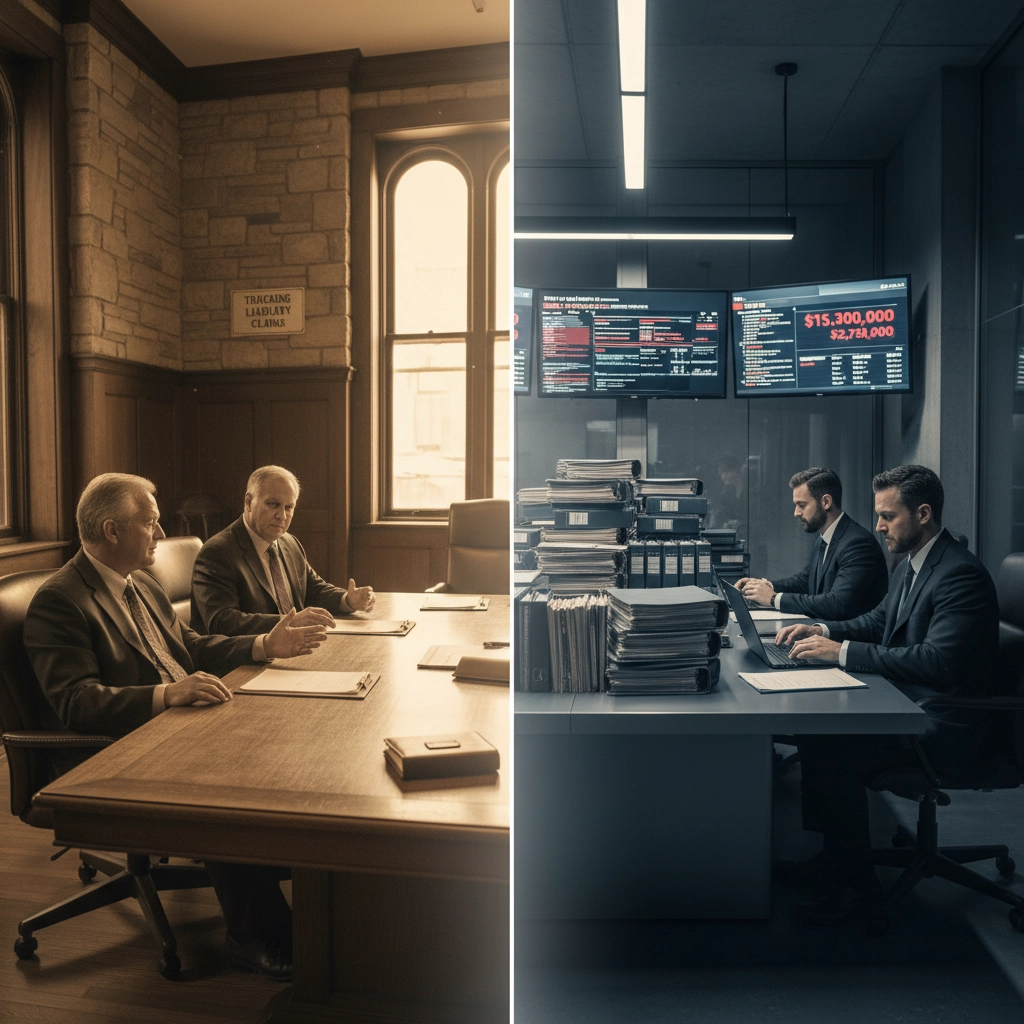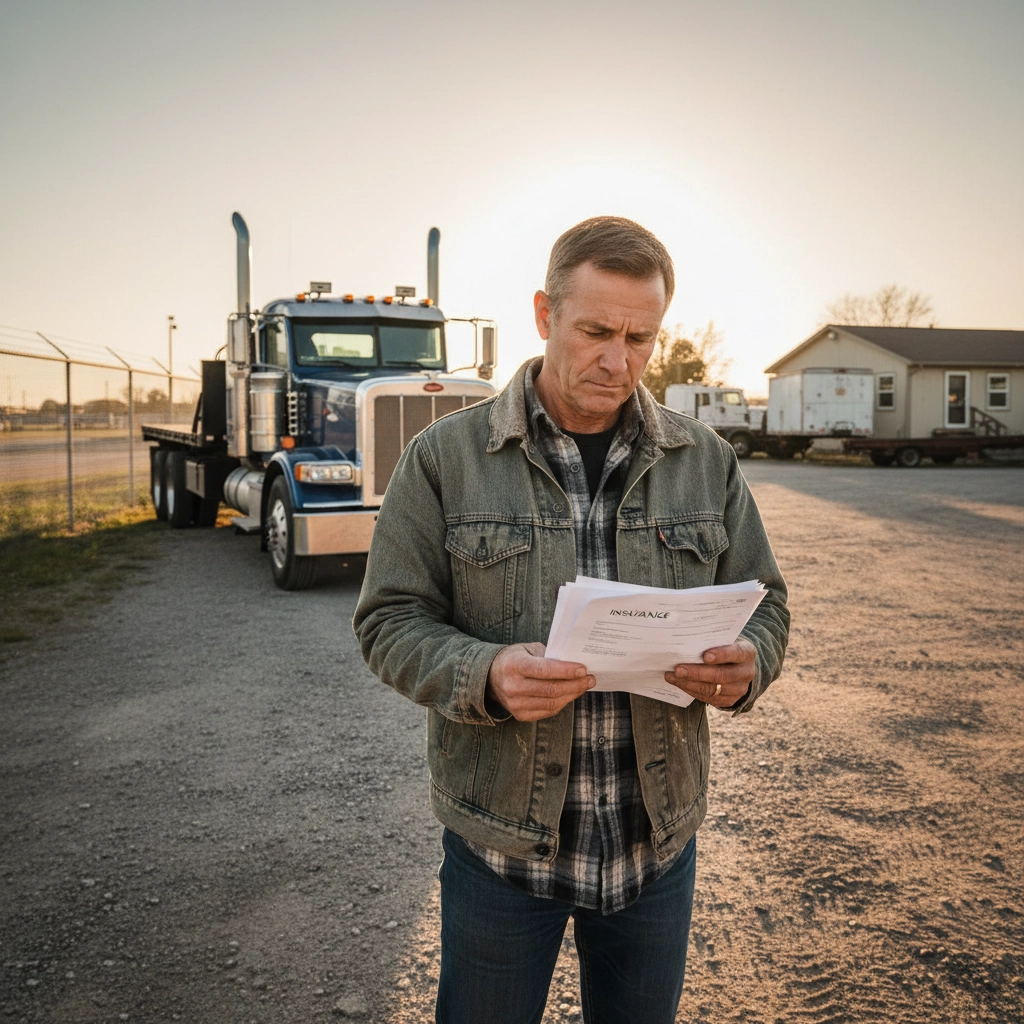85% of fleet operators underestimate which threat is bankrupting their business faster , here's the data that'll change everything.
If you're running a trucking operation in 2024, you've felt the squeeze. Your insurance premiums are climbing faster than fuel prices during a shortage, and every headline about another multi-million-dollar lawsuit makes you wonder if your fleet could survive just one bad accident.
But here's the question keeping fleet managers awake at night: Are nuclear verdicts or skyrocketing insurance costs doing more damage to your bottom line? The answer might surprise you , because these aren't actually separate problems competing for the title of "biggest budget destroyer."
The Truth About Nuclear Verdicts and Insurance Costs
Let's get one thing straight from the jump: nuclear verdicts and rising insurance premiums aren't two different diseases attacking your fleet. They're more like cause and effect. Nuclear verdicts are the disease, and insurance rate hikes are the fever that follows.
When juries award $25 million, $50 million, or even $100 million verdicts against trucking companies, insurance carriers don't just absorb those losses and smile. They spread that pain across the entire industry through higher premiums, stricter underwriting, and sometimes by simply refusing to cover certain types of operations.

The Numbers That Should Terrify Every Fleet Owner
Nuclear Verdicts: Growing Like a Cancer
The data on nuclear verdict growth is absolutely staggering. We're not talking about a gradual increase , we're talking about explosive, exponential growth that's rewriting the rules of trucking liability.
Between 2010 and 2018, the average nuclear verdict jumped from $2.3 million to $22.3 million. That's not a typo , that's a 967% increase in just eight years. By 2023, the median nuclear verdict exceeded $25 million, with some sources reporting averages as high as $33.8 million.
But here's the really scary part: it's not just that the verdicts are getting bigger. There are way more of them. The frequency of nuclear verdicts has increased by 1,000% over the past decade. Think about that , ten times more nuclear verdicts happening now compared to just ten years ago.
Marathon Research documented 89 nuclear verdicts in 2023 alone, resulting in jury awards totaling $14.5 billion. That's billion with a "B." In one year.
Insurance Costs: The Predictable Response
Now let's look at insurance premium increases. They're substantial, but they follow a more predictable pattern than nuclear verdicts.
Most fleets are seeing annual premium increases between 20% and 40%. Commercial insurance premiums rose 9.8% in Q1 2024, and fleet insurance costs jumped 11.1% year-over-year. These rates have been climbing consistently for five straight years.
The increases aren't uniform across all fleets, though. Low-risk carriers with strong safety records might see "only" 8-10% annual increases. Average-to-marginal carriers? They're getting hit with 35-40% increases every year.

So Which One Is Winning the Race to Bankruptcy?
If we're talking pure acceleration, nuclear verdicts are growing faster than insurance costs by a massive margin. A 1,000% increase in frequency and nearly 10-fold increases in award sizes absolutely demolish annual insurance premium climbs of 20-40%.
But here's where it gets complicated for your actual budget planning. Nuclear verdicts are like getting struck by lightning : catastrophic when they hit, but most fleets never experience one directly. Insurance premium increases, on the other hand, are like paying higher rent every single month. They're guaranteed, predictable, and they compound year after year.
The real budget destroyer is the combination effect. Every nuclear verdict that happens anywhere in the industry pushes insurance rates higher for everyone. You might have a perfect safety record, but if another fleet gets hit with a $50 million judgment, your premiums are going up too.
The Small Fleet Massacre
This dual threat hits smaller fleets the hardest, and the numbers prove it. Small fleets pay over three times more per mile for insurance compared to large fleets. When you're already operating on thin margins, a 35% insurance premium increase can be the difference between staying in business and closing the doors.
Many smaller operators have already been forced into bankruptcy by unaffordable insurance rates driven by nuclear verdict trends. It's not just speculation : it's happening right now across the industry.

The Litigation Lottery System
Here's what makes nuclear verdicts so dangerous: they've turned truck accidents into lottery tickets for plaintiffs' attorneys. The "litigation lottery" mentality has created a system where lawyers actively hunt for trucking accidents because they know the potential payouts are enormous.
These attorneys have developed sophisticated marketing strategies to find accident victims and convince them to pursue maximum damages. They're not just seeking compensation for actual damages anymore : they're going for life-changing money that bankrupts carriers and drives up costs for the entire industry.
What This Means for Your Fleet Planning
When you're budgeting for next year, you need to plan for both immediate insurance cost increases and the long-term threat of nuclear verdicts. Here's what smart fleet operators are doing:
Immediate Defense Against Insurance Increases:
- Invest heavily in safety technology and driver training
- Implement video telematics and driver-facing cameras
- Maintain detailed safety records and incident documentation
- Work with brokers who understand trucking-specific risks
Long-term Protection Against Nuclear Verdicts:
- Consider higher deductibles to reduce premium costs
- Implement AI-powered safety systems that can prevent accidents
- Develop comprehensive driver screening and ongoing training programs
- Create a strong safety culture that goes beyond compliance

The Technology Solution
The good news is that technology is finally catching up to help fleets fight back. Advanced safety systems including collision mitigation, lane departure warnings, and driver monitoring can significantly reduce your accident risk and help justify lower insurance rates.
Underwriters are starting to offer meaningful discounts for fleets that can demonstrate they're using proven safety technologies effectively. Some carriers are seeing 10-15% reductions in premiums by implementing comprehensive safety tech packages.
Industry Response: Fighting Back
The trucking industry isn't taking this lying down. Organizations like the American Trucking Associations are pushing for tort reform to address lawsuit abuse and put reasonable caps on non-economic damages in trucking cases.
Several states are considering legislation to limit nuclear verdicts and create more reasonable standards for trucking liability cases. But legislative change takes time, and fleet operators need solutions they can implement now.
The Verdict on Your Verdict Strategy
So which threat is destroying fleet budgets faster? Nuclear verdicts are accelerating at a steeper rate, but insurance costs are the daily drain that's actually bankrupting more fleets.
The winning strategy isn't choosing which threat to focus on : it's understanding that they're connected and building defenses that address both simultaneously. Prevent accidents through technology and training, and you reduce both your nuclear verdict exposure and your insurance costs.
Share Your Story
We want to hear from fleet operators dealing with these challenges firsthand. Have you seen dramatic insurance increases? Has your operation been affected by nuclear verdict trends? What strategies are working for your fleet?
Ready to stay ahead of industry challenges? Subscribe to GoTrucking.News for daily updates on regulatory changes, market trends, and practical solutions for fleet operators.
Contact us:
- Email: info@gotrucking.news
- Phone: 1-800-TRUCKING
- Follow us: LinkedIn | Twitter | Facebook | Instagram
Join the conversation using #Litigation #FleetBudget #TruckingInsurance and tell us which threat is hitting your operation harder.
Visit our trucking industry coverage for more insights on the challenges facing modern fleets.


